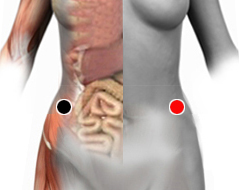Obesity
Pairs
upperfront iliac crest- upperfront iliac crest
thyroid - duodenum
thyroid - scapula
thyroid - thymus
thyroid - cheekbone
stomach - spleen
pancreas - liver
bladder - Iliac crest

Generalities:
Overweight and obesity are defined as an abnormal or excessive accumulation of fatty tissue that increases the risk of suffering from many other diseases.
The body mass index (BMI) is a simple indicator of the relationship between weight and height that is frequently used to identify overweight and obesity in adults. It is calculated by dividing the weight of a person in kilos by the square of its size in meters (kg / m 2).
Related pairs:
The pairs of biomagnetism related to this disorder are: Adenovirus 36, Gluttony (Iván), Elena, Ramsés, Thyroid dysfunction, False Diabetes, Trypanosoma gambiae, Clostridium Perfringens.
The World Health Organization defines the following parameters:
- A BMI equal to or greater than 25 determines overweight.
- A BMI equal to or greater than 30 determines obesity.
The BMI provides the most useful measure of overweight and obesity in the population, since it is the same for both sexes and for adults of all ages. However, it should be considered as an indicative because it may not correspond to the same thickness level in different people.
Morbid obesity is when the person's life is endangered by excess fat.
Many diseases are the result of obesity: cancer, diabetes, and cardiovascular problems such as hypercholesterolemia, arterial hypertension and greater propensity to suffer a heart attack. However, these are only the most important in a long list of disorders caused by obesity, such as locomotor disorders, joint problems (osteoarthritis ...), nervous system disorders, etcetera.
A balanced diet, reducing the number of calories and fats, as well as exercising regularly are the most recommended measures.